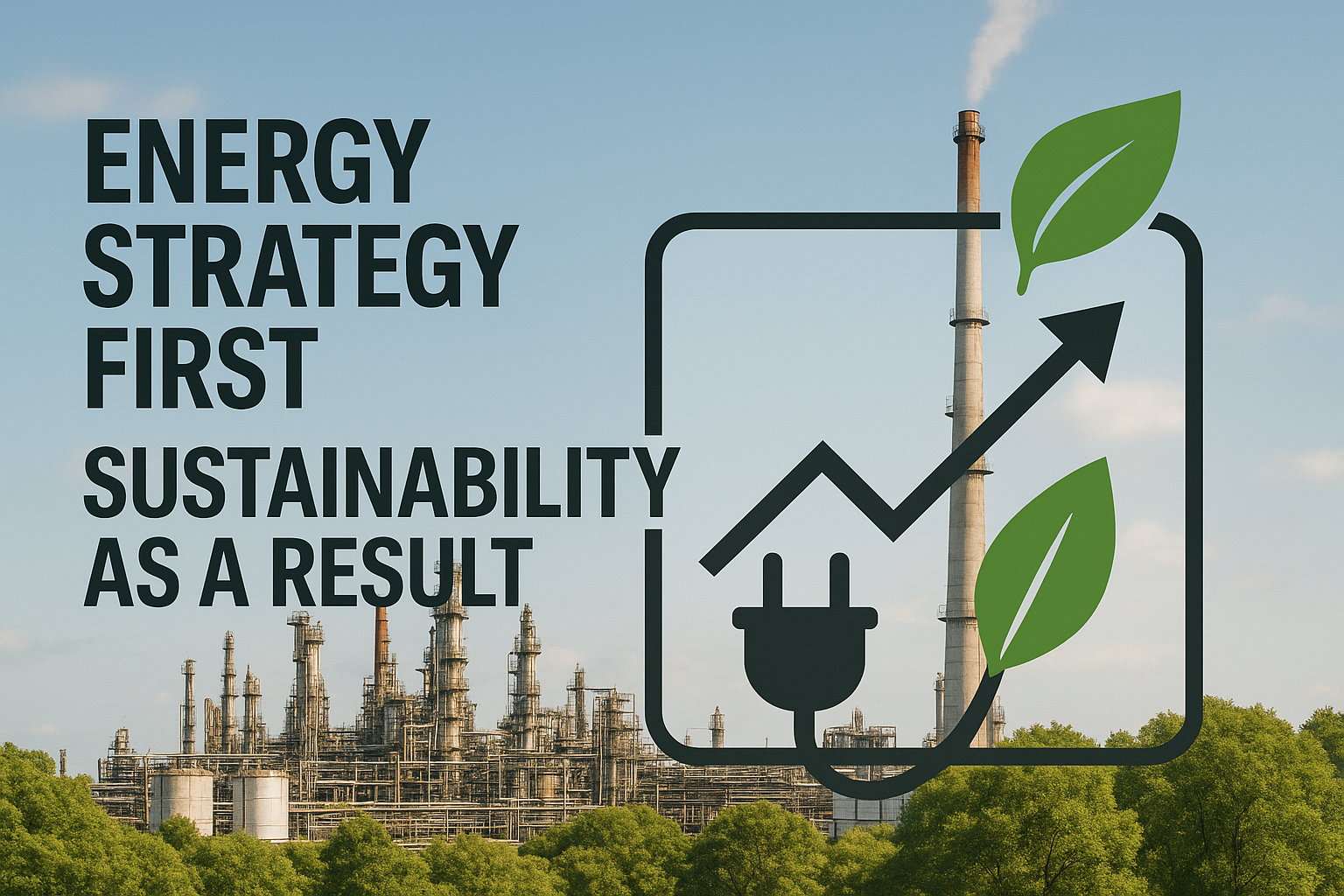AI adoption is accelerating across the industrial sector, with many manufacturers embedding it into their digital transformation strategies. A recent McKinsey survey found that AI leaders outperformed their industry peers by a factor of 3.4. Globally, AI has the potential to generate around $13 trillion in additional economic activity by 2030—yet approximately $1 trillion in value remains untapped in the industrial sector alone.
The opportunity is real, but the gap between ambition and realized value remains wide. Pilots that stall or models that never get deployed translate into lost productivity and skeptical executives.
McKinsey calls industrial AI the “next frontier” for complex processing plants, with the potential to drive margin expansion through deeper process understanding and real-time optimization. But five persistent challenges tend to determine whether AI initiatives scale into real results or fade as proofs of concept: dirty data, widening skills gaps, unclear ROI, legacy infrastructure, and uneven change management.
This analysis breaks down each of these constraints and offers actionable solutions—rooted in field research and real-world deployments—to help manufacturers turn AI’s potential into measurable outcomes.
1. Fragmented, Disconnected Data
Your plant’s data lives everywhere except where you need it. ERP databases, IoT devices, and decades-old PLCs each speak their own language, use different naming conventions, and store information in proprietary formats. Missing sensor readings create gaps that break model training, while security and regulatory requirements lock down access to the data you actually need.
Data readiness is the top barrier to industrial AI, with nearly 47 percent of process industry leaders still wrestling with fragmented, low-quality datasets that kill digital projects before they start.
The solution requires a systematic approach to data governance and integration. Start by running a plant-wide data inventory to map every sensor, historian, and database. Deploy integration platforms or ETL pipelines that standardize tags before data hits the model, establishing consistency across disparate systems. Create a formal data-quality framework with automated validation and cleansing processes that catch errors before they corrupt your models.
Launch a small “golden dataset” pilot so the team perfects its approach before scaling plant-wide. This controlled environment allows you to test data flows, identify bottlenecks, and refine processes without risking production systems. Use low-code masking or encryption tools to safeguard sensitive streams without blocking access, ensuring compliance while maintaining the data accessibility your models need.
Clean, accessible data cuts model development time in half and eliminates the costly do-overs that plague most AI projects. Get this foundation right, and everything else becomes possible.
2. Workforce Skills & Culture Gap
You can’t deploy industrial AI if the right people don’t exist to run it. A 2025 Nash Squared survey shows the AI skills shortage now outstrips even big data and cybersecurity gaps, leaving technology leaders scrambling for talent.
Without those skills, pilot projects stall, business value disappears, and critical knowledge walks out the door as seasoned operators retire. Younger recruits often bypass the industry unless they see modern, AI-driven careers. The result is slower implementation, limited returns, and a widening competitive gap.
The most effective response combines workforce development with strategic partnerships. Some tips:
- Upskill current operators through AI-driven simulators and focused bootcamps that build on their existing process knowledge.
- Create cross-functional “AI squads” that pair process engineers with data scientists, fostering knowledge transfer while maintaining operational continuity.
- Deploy explainable dashboards so front-line operations understand and trust algorithmic suggestions. When operators see the reasoning behind AI recommendations, resistance transforms into collaboration.
- Co-develop curricula with universities or vendors for embedded training programs that create a pipeline of skilled workers.
- Use generative AI tools to capture veteran knowledge before retirement, preserving decades of process expertise in accessible formats.
- Budget reskilling like a capital project—culture shifts only scale when investment matches ambition.
Organizations that treat workforce development as seriously as technology deployment consistently achieve higher adoption rates and stronger returns.
3. Proving the ROI
Budgets for industrial AI keep expanding, yet process industry leaders still grapple with a basic question: will the investment actually pay off?
Many pilots show promise, but hidden integration costs, lengthy payback periods, and vague success metrics make it hard to translate early wins into audited financial impact. A recent executive survey warns that companies are shifting from a “fail-fast” mindset to more cautious adoption precisely because of these ROI blind spots, stalling momentum on otherwise viable projects.
The solution is a numbers-first discipline that treats every AI technique like any other capital project. Start by aligning each use case with explicit P&L levers—higher yield, lower energy consumption, less scrap, reduced unplanned downtime—so the value narrative resonates with finance. Capture a rock-solid baseline before deployment, as historical data provides the counterfactual that proves causality once new models go live.
Map benefits and risks in a value-driver tree, tracing how throughput gains on one system cascade into margin uplift across the complex. Calculate Total Cost of Ownership (TCO), including model retraining, data infrastructure, and front-line operations support, since surprises erode trust faster than poor accuracy.
Run time-bound proof of value projects on archived data to set realistic performance thresholds, then compare projected savings against any existing advanced process control efforts. Remember that margins on a renewable diesel unit can swing several dollars per barrel with even minor yield improvements, making rapid payback achievable.
Maintain transparent dashboards that continuously track yield, energy, and downtime against the pre-AI baseline. This allows executives to validate that returns exceed the investment while providing ongoing proof of value. When ROI is quantified end-to-end—capturing costs, benefits, and risks—executive sponsors gain the confidence to move from pilot to plant-wide scale.
4. Marrying AI with Legacy Machinery & IT Stacks
If your plant still runs on proprietary PLC protocols and air-gapped networks, you’re not alone, many process industry leaders say fragmented data and poor connectivity remain the biggest roadblocks to AI integration. These constraints make it tempting to delay modernization; yet, the payoff of real-time process optimization grows each day that production data sits idle.
The path forward doesn’t require wholesale replacement. Deploy vendor-agnostic edge gateways that translate Modbus, OPC, or custom tags into open standards without touching control logic. This approach preserves existing investments while creating the connectivity modern AI systems require. Closed Loop AI Optimization (AIO) can identify and capture optimization potential and uncover nonlinear relationships that traditional APC misses, offering additional upside once basic connectivity is in place.
Let closed loop AI optimization operate in “advisory-only mode” first, observing operations so you can benchmark its recommendations before granting closed-loop control. This builds confidence while proving value in a risk-free environment. Align cutovers with scheduled maintenance windows to minimize disruption to front-line operations, treating integration as part of regular equipment lifecycle management.
Bring cybersecurity teams in early and enforce zero-trust segmentation around new data pipelines. Security can’t be an afterthought when connecting legacy systems to modern AI platforms. Use digital twin technology to stress-test models virtually, proving benefits before touching a single valve or control loop.
Handled incrementally, integration becomes a low-risk evolution rather than an expensive rip-and-replace project. Each successful connection builds momentum and expertise for the next phase of modernization.
5. Change Management & Scaling Beyond the Pilot
Most promising AI pilots stall when leadership, metrics, and mindsets pull in different directions. Competing KPIs eclipse long-term digital goals, frontline skepticism grows, and governance fades once initial excitement passes. Research on AI-driven organizational change shows that projects scale successfully only when people, not just algorithms, move in lockstep.
To push past the pilot and embed industrial AI plant-wide, start by securing an executive sponsor and establishing a cross-disciplinary steering committee that meets weekly. This visible commitment maintains momentum and resolves KPI conflicts early. Publish plant-level success metrics—uptime, energy intensity, yield—so every stakeholder sees the same scoreboard and understands how their role contributes to overall success.
Roll out in stages: single line to cell to network. Iterative releases allow you to capture feedback and adjust the model before touching high-risk systems. Each phase builds on lessons learned while demonstrating tangible value to skeptics. Expose AI decisions through transparent dashboards that show operators not just what the system recommends, but why. When operators understand the reasoning, trust replaces resistance.
Maintain open feedback loops after go-live with regular “voice of operator” sessions. Sustained reinforcement prevents regression and captures insights that improve model performance. Treat change management as rigorously as any capital project, with dedicated resources, clear milestones, and regular progress reviews.
When communication, training, and governance scale alongside the technology, pilots transform from experiments into enterprise-wide operations that drive growth in profits and resilience. The organizations that master this transition consistently outperform those that focus solely on technical implementation.
Start Your Action Plan for Unlocking Industrial AI Value
Data readiness, workforce capability, clear ROI math, seamless integration, and disciplined change management form the five levers that separate stalled pilots from plant-wide value. Process industry leaders who treat each lever as a program—not an afterthought—consistently see higher adoption rates and stronger returns. Yet with only 1% having reached full AI maturity, enormous opportunity remains untapped.
Take a candid assessment of where you stand on every lever, then prioritize the constraints that most limit your front-line operations. A quick readiness evaluation or tightly scoped “golden dataset” pilot will surface gaps before significant capital is committed. Success requires treating AI transformation as both a technical and organizational challenge, with equal attention to algorithms and the people who must trust them.
The companies that master these five constraints will define the next generation of process industry leadership, turning AI potential into sustained competitive advantage. Utilize Imbuit’s Closed Loop Optimization solution to get your industrial processes up to speed.




